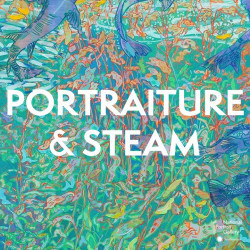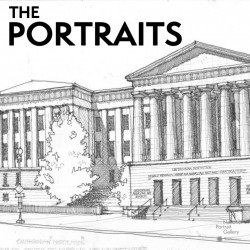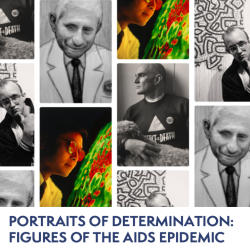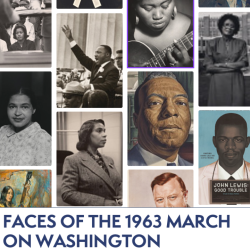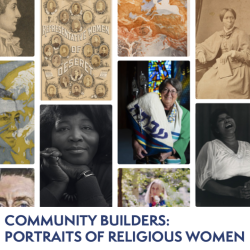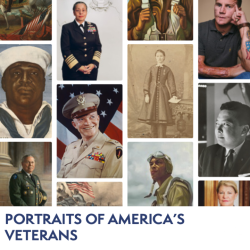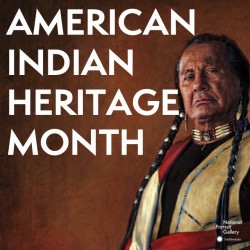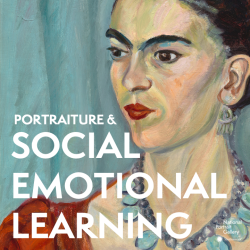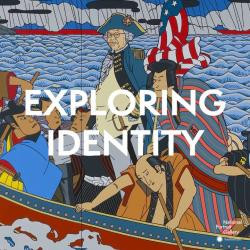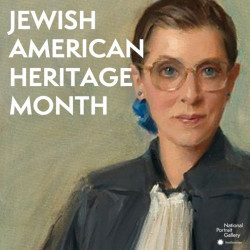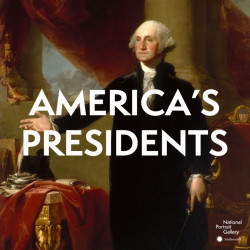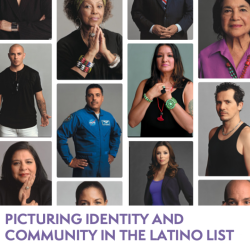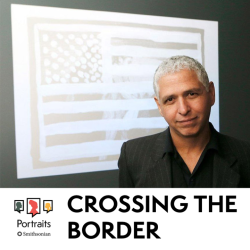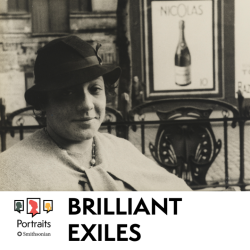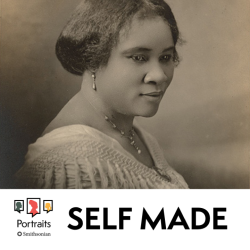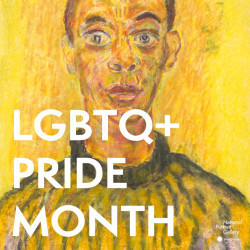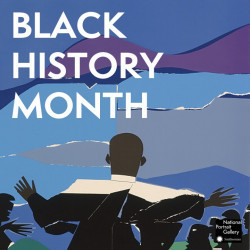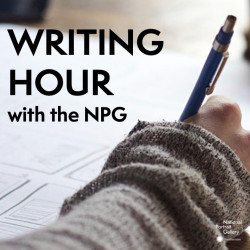Nicole Vance's collections
Portraiture and STEAM (Science, Technology, Engineering, Art, and Math)
<p>This Learning Lab Collection complements the National Portrait Gallery student program, Portraiture and STEAM.</p>
<p></p>
<p>Students will explore the ways portraiture can be a springboard to discuss STEAM concepts (Science, Technology, Engineering, Art, and Math). By analyzing portraits, students will consider the sitters’ stories and recognize their contributions to the various STEAM fields. During the program, there will be opportunities to examine a broad range of STEAM topics to allow for classroom connections and emphasis on relevance. </p>
<p></p>
<p>After completing the program, students will be better able to:</p>
<ul><li>Identify key components of a portrait and discuss what one can learn about the sitter through these components.</li><li>Identify and analyze the contributions that sitters made in their STEAM fields of expertise.</li><li>Use the museum’s collection and portraiture as a springboard to exploring a variety of STEAM concepts.</li></ul>
<p>#NPGteach</p>
 Nicole Vance
Nicole Vance
75
The Portraits
<p>The National Portrait Gallery tells the story of the United States of America by portraying the people who shape the nation’s history, development and culture.</p>
<p>This collection is a virtual gallery of all the portraits found within student programs at the National Portrait Gallery. Learn more about our <a href="https://npg.si.edu/teachers/school-groups">virtual student programs</a> and explore more of the <a href="https://learninglab.si.edu/org/npg">National Portrait Gallery's Learning Lab collections</a>.</p>
<p>#NPGteach</p>
<p><br></p>
 Nicole Vance
Nicole Vance
292
Ecology, Hawaii, and Portraiture
<p>Learn about the ecology of Hawaiian Islands through the eyes of those who called them home. Together we will closely look at portraits of musicians, leaders, and athletes who taught the world about the Aloha State and ways to preserve it.</p>
<p><em>"Ecology, Hawaii, and Portraiture</em>”<em> is part of the teacher workshop series Classroom Conversations which uses portraits to explore topics and themes related to history and heritage months throughout the school year.</em> </p>
 Nicole Vance
Nicole Vance
31
Gender Expression and Portraiture
<p>Use this collection to discuss gender expression, portraiture, and its relevance today. Explore how artists use portraiture to examine, criticize, and question the relationships between gender and society.</p>
<p><em>Gender Expression and Portraiture</em>”<em> is part of the teacher workshop series “Classroom Conversations” which uses portraits to explore topics and themes related to history and heritage months throughout the school year.</em> </p>
 Nicole Vance
Nicole Vance
36
Portraits of America's Veterans
<p>Commemorate American Veterans and get to know their stories in this collection. Take a close look at several veterans and how their lives and legacies are shaped by their military service. #NPGteach</p>
 Nicole Vance
Nicole Vance
50
American Indian Heritage Month with the National Portrait Gallery
<p>Meet the Native Americans who shaped the history, development, and culture of the United States of America. Use this collection to celebrate American Indian Heritage Month and embrace indigenous voices in the classroom year round. Native peoples have lived throughout what is now the United States since time immemorial and continue to make homes and communities here today. This collection mirrors parts rather than the whole of this continuing story. It also reflects the history of portraiture in the United States- we recognize that who is represented and how one is represented reflects the country's flaws as well as it's strengths<br></p>
<p>#NPGteach</p>
<p><strong>Keywords: </strong>Portraits, American Indian Heritage Month, American Indian, Native American, Indigenous, Ani-Yunwiya (Cherokee), Diné (Navajo), Chata (Choctaw), Sioux, Wah-Zha-Zhi (Osage), Ojibwe (Chippewa), Apache, Niitsitapi (Blackfeeet), Haudenosaunee (Iroquois), Nuuchu (Ute), Nuwuvi (Paiute), Seminole, Muscogee (Creek), Quapaw, Portraits</p>
 Nicole Vance
Nicole Vance
184
Portrait Detectives
<p>This Learning Lab complements the National Portrait Gallery's student program, Portrait Detectives.</p>
<p>Students will be transformed into Portrait Detectives, searching portraits for and analyzing clues to learn more about significant Americans. Through interactive discussions and sketching and writing activities, students will read, compare, and contrast portraits across the collection. This module is divided into the following themes to best support your curriculum and student interests: Presidents, Activists, Icons, and Scientists.</p>
<p><strong>Objectives:</strong></p>
<p><strong></strong>After completing this lesson, students will be better able to: </p>
<ul>
<li>Identify important Americans and analyze their contributions to U.S. History <br>
</li>
<li>Identify key components of a portrait and discuss what we can learn about the sitter through these components.</li></ul>
<p><a href="https://npg.si.edu/teachers/school-groups">Schedule</a> a virtual Portrait Detectives program with National Portrait Gallery educators.</p>
<p>#NPGteach</p>
<p><br></p>
 Nicole Vance
Nicole Vance
93
Exploring Identity through Portraiture
<p>This Learning Lab complements the National Portrait Gallery's student program, Exploring Identity through Portraiture.</p>
<p>Exploring Identity through Portraiture explores the ways in which artists and sitters use portraiture as a means to convey individual, community/cultural, and national identity. By analyzing portraits, including self-portraits, students will consider how the artists tell the sitters’ stories, paying attention to how the artists’ choices reveal some—but perhaps not all—aspects of the sitters’ identity. Students will explore how portraiture can be an avenue that they can use to represent their own identities and make meaning of what is important to them.<br></p>
<p><strong>Objectives</strong></p>
<p><strong></strong>After completing this lesson, students will be better able to: </p>
<p>• Examine how modern and contemporary artists use portraiture to reveal aspects of a sitter’s individual, community/cultural, and national identity. </p>
<p>• Identify key components of a portrait and discuss what one can learn about the sitter through these components. </p>
<p>• Discuss the artistic choices that portrait artists make and consider how such decisions can reveal the artists’ viewpoints and also influence the viewers’ understanding of the sitters’ identity. </p>
<p>• Use the museum’s collection as a gateway to investigating and exploring one’s own individual, community/cultural, and national identity.</p>
<p>#NPGteach</p>
 Nicole Vance
Nicole Vance
78
Jewish American Heritage Month with the National Portrait Gallery
<p>Meet the Jewish Americans who shaped the history, development, and culture of the United States of America. Use this collection to celebrate Jewish Heritage Month and embrace Jewish voices in the classroom year round.<em> </em>This collection features some but not all portraits of Jewish American sitters found in the National Portrait Gallery's permanent collection. <em>Please note that the sitters in this collection are American citizens who are Jewish whether by culture, ethnicity, or religion. </em></p>
<p>#NPGteach<br></p>
 Nicole Vance
Nicole Vance
236
PORTRAITS Podcast: Brillant Exiles
<p>In this collection, students will explore how American women in Paris from 1900 to 1939 defied societal norms, contributed to modernism, and influenced art, literature, dance, and design. They will analyze the intersectional identities of these women and discuss how living in Paris versus returning to America impacted their lives and work.</p>
<p>This lesson was written by Dahlia H. Constantine, Gallery Educator at the National Portrait Gallery.</p>
<p>#NPGteach</p>
 Nicole Vance
Nicole Vance
32
PORTRAITS Podcast: Self Made
<p>In this collection, students will analyze the significance of Madam C.J. Walker’s life and contributions, examine how portraits and media representation shape our understanding of historical figures, and explore the concept of self-made success and its implications in American history. </p>
<p>This lesson was written by Dahlia H. Constantine, Gallery Educator at the National Portrait Gallery.</p>
<p>#NPGteach</p>
 Nicole Vance
Nicole Vance
36
LGBTQ+ Pride Month with the National Portrait Gallery
<p>Meet the LGBTQ+ pioneers who shaped the history, development, and culture of the United States of America. Use this collection to celebrate LGBTQ+Pride Month, LGBTQ+ History Month, and embrace LGBTQ+ voices in the classroom year round. This collection reflects the history of portraiture in the United States- we recognize that who is represented and how one is represented reflects the country's flaws as well as it's strengths.</p>
<p>#NPGteach</p>
 Nicole Vance
Nicole Vance
134

